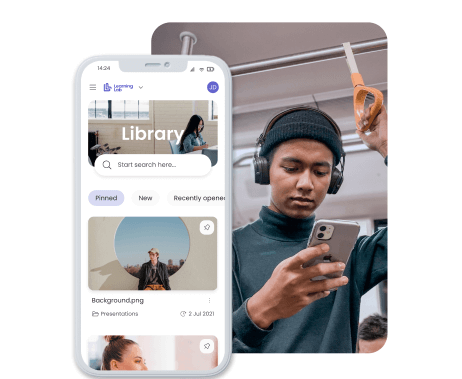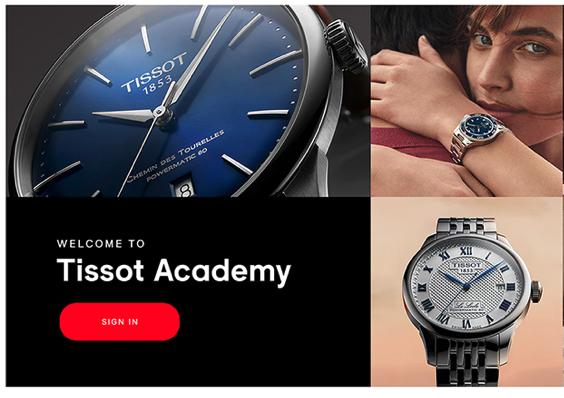Tips To Design Mobile-friendly Retail Training
Mastering Mobile: Expert Tips for Designing Mobile-friendly Retail Training
In retail training industry, the accessibility and convenience afforded by mobile-friendly online resources are paramount.
Retail learners need to access information swiftly and efficiently, whether they're on the sales floor or on the go.
With smartphones and tablets becoming omnipresent tools in the retail environment, designing training materials optimised for these devices is essential.
Online retail training serves not only as a source of knowledge but also as job aids, offering quick and easy access to critical information right at the learner's fingertips.
A mobile-friendly Learning Management System (LMS) must go beyond static content delivery; it should include features like chat and peer-to-peer capabilities to foster online discussions and collaboration, thereby promoting continuous learning.
In this article, we will delve into the nuances of designing mobile-friendly educational materials, emphasising the significance of audio and video-based learning.
We will provide insights on creating mobile-friendly activities and interactions to enhance engagement and knowledge retention among retail learners.
The Importance of Mobile-friendly Training in Retail
Accessibility and portability of information in online retail training are paramount in ensuring that all employees, regardless of their location or schedule constraints, can access the necessary resources to enhance their skills and knowledge base.
By making training materials available online and optimising them for mobile devices, retailers empower their workforce to learn anytime, anywhere. This flexibility not only accommodates diverse learning styles and preferences but also fosters continuous learning, crucial in the rapidly evolving retail landscape.
Mobile learning in a retail context offers benefits such as on-the-go access to product information, sales techniques, and customer service guidelines, enabling employees to deliver exceptional service and drive sales even while away from traditional training environments.
The convenience of mobile learning encourages greater engagement and retention, ultimately leading to a more knowledgeable and adaptable retail workforce poised for success in an increasingly competitive market.
Mobile-friendly Training Design for Retail Training
Here are considerations for mobile-friendly online retail training design include optimising content for smaller screens and ensuring compatibility across various devices and operating systems, while also prioritising intuitive navigation and interactive elements to enhance engagement and retention.
Incorporating responsive design principles and leveraging multimedia formats can further enhance the effectiveness of mobile learning experiences in retail contexts.
Responsive Design Principles
Responsive design principles for retail online training involve designing course materials that adapt seamlessly to different screen sizes and orientations, ensuring a consistent and user-friendly experience across desktops, tablets, and smartphones.
By prioritizing responsiveness, retailers can maximize accessibility and engagement, enabling employees to access training content conveniently from any device, thereby facilitating continuous learning and skill development.
Optimising Content for Small Screens
Optimizing content for small screens in mobile-friendly retail training involves concise and visually appealing design elements to ensure clarity and ease of navigation, crucial for effective learning on mobile devices.
By prioritizing brevity and clear visuals, retailers can maximize comprehension and engagement among employees accessing training materials on smartphones, facilitating efficient skill acquisition and knowledge retention.
Incorporating Interactive Elements
Incorporating interactive elements in online retail training is vital for maintaining learner engagement and fostering active participation, enhancing the overall effectiveness of the learning experience. Activity-based learning not only stimulates learners' involvement but also promotes deeper understanding and retention of information, contributing to a more proficient and adaptable workforce in the dynamic retail industry.
Benefits of Audio and Video
The power of audio and video for online retail training lies in their ability to deliver immersive and dynamic learning experiences that engage multiple senses simultaneously.
By leveraging audio and video content, retailers can effectively convey complex concepts, demonstrate practical skills, and simulate real-world scenarios, enhancing comprehension and skill acquisition among learners.
As the most powerful media for mobile learning, audio and video formats enable employees to access training materials conveniently on smartphones, facilitating on-the-go learning and maximizing training effectiveness in the fast-paced retail environment.
Tips for Mobile-friendly Retail Training Design
Retail Training: Brand Matters
Before brand and design considerations are pivotal when designing retail training, as e-learning courses represent a reflection of the organisation's voice and values. Publishing an e-learning course is not only a training exercise but also a branding endeavour, where consistency in design and alignment with brand identity are crucial for conveying a unified message.
Addressing the challenges of mobility adds complexity to the mission, necessitating a deep understanding of design and brand principles to ensure a seamless and impactful learning experience across various devices.
Sizes and Colours
When designing training for mobile, attention to sizes and colors is pivotal, ensuring readability and accessibility across different screen sizes and lighting conditions.
It's essential to carefully select fonts and contrast levels to facilitate easy reading and comprehension, optimizing the learning experience for mobile users during lectures and coursework.
Video and Audio
Transforming any text within retail training into audio or video formats is crucial, considering the challenges of reading online content, particularly on smartphones.
By incorporating audio and video-based learning assets, retailers can provide engaging and accessible training experiences that accommodate diverse learning preferences and optimize comprehension, especially in the mobile environment where text-based content may be cumbersome to navigate.
Visual Engagement Strategies
Visual engagement strategies are highly effective for transforming complex concepts into clear and easily understandable information, providing learners with a more intuitive and engaging learning experience.
Bite-sized Learning Modules
In mobile learning, nano learning emerges as the predominant approach due to its bite-sized content and optimized navigation, catering to learners' on-the-go preferences.
This method ensures efficient learning interaction by preventing cognitive overload and allowing learners to absorb information in manageable chunks. By integrating nano learning with effective content management systems, retailers can deliver personalised and easily digestible training modules, enhancing knowledge retention and skill acquisition among employees.
Seamless Navigation
Access to the retail module must be direct and user-friendly to ensure seamless engagement. Designing custom learning paths can effectively guide learners through tailored experiences, optimizing comprehension and skill acquisition.
Mobile-friendly Assessments
Assessments in retail training can be video-based, incorporating practical exercises to evaluate learners' comprehension and application of skills.
Quizzes can be presented in highly engaging formats such as Video Quizzes or Interactive quizzes, enhancing learner participation and reinforcing key concepts effectively.
Social and Peer to Peer Learning
Incorporating social and peer-to-peer learning in online retail training fosters collaboration and knowledge sharing among employees, enriching the learning experience.
By leveraging learning platforms for discussion forums, group projects, and peer feedback, retailers can create a supportive learning community that enhances engagement and promotes continuous skill development.
Retail Case Studies
Mobile Learning for Longines
The Longines Academy is dedicated to excellence in mobile learning, aiming to train its community to deliver premium and exclusive customer experiences on-the-go.
Through comprehensive education and development programs tailored for mobile devices, Longines ensures that every interaction with their brand is characterised by sophistication and knowledge, accessible anytime, anywhere.
The academy meticulously prepares its members not only in the craftsmanship of its timepieces but also in customer care nuances, transcending ordinary service into memorable encounters even in the digital realm.
This dedication to fostering understanding and passion for watchmaking among its ambassadors enables Longines to consistently provide exceptional, bespoke experiences for every customer, reflecting the brand’s legacy of elegance and excellence in mobile retail training.
Mobile Friendly for TISSOT
The Tissot Academy offers a mobile-friendly learning experience that revolutionises traditional education with engaging multimedia activities.
By integrating captivating video content and interactive modules accessible on smartphones, learners can delve into the intricacies of horology dynamically and compellingly.
This innovative approach not only enriches the learning journey but also instills the values and heritage of the Tissot brand deeply into each lesson, ensuring participants gain a comprehensive understanding of watchmaking through personalized and immersive educational experiences.
Select the right Creative LMS with a Powerful Authoring Tool
Overcoming challenges in mobile-friendly training implementation requires thorough testing of the flexibility of the authoring tool within the Learning Management System (LMS).
The ideal solution should liberate users from technological constraints, offering branded templates customised for mobile devices, as well as options for animations, font selection, colour schemes, and additional features like clipboard functionality.
Beyond the tool itself, accessibility to a responsive team is crucial, one that is readily available for addressing new development needs and brainstorming innovative features to continually enhance the mobile learning experience.
This combined approach ensures a seamless and effective transition to mobile-friendly training while fostering ongoing improvement and adaptability.
Conclusion
The success of mobile-friendly training implementation hinges on several key factors. First and foremost is the flexibility and adaptability of the authoring tool within the Learning Management System (LMS), which must be thoroughly tested to ensure compatibility with mobile devices.
The ideal solution should alleviate users from technological constraints, offering branded templates, animation capabilities, font and colour customization, and other essential features tailored to mobile learning.
Accessibility to a responsive team for ongoing support and development is vital, facilitating the incorporation of new features and continuous improvement.
By addressing these considerations comprehensively, organisations can effectively overcome challenges and create a seamless, engaging, and impactful mobile learning experience for their workforce.
Simplify Learning, Elevate Design.
The Learning Lab, A fully customised Learning Platform & eLearning Provider to create branded and engaging training experience.







